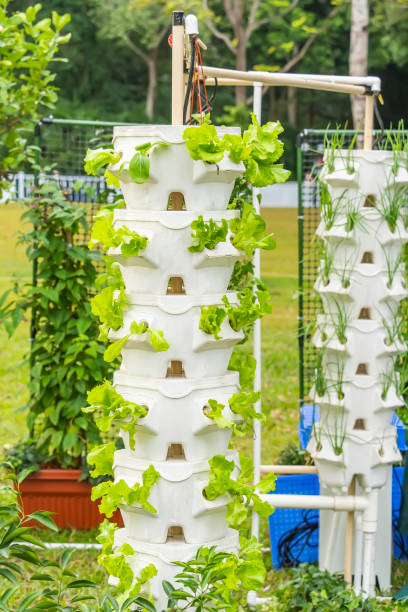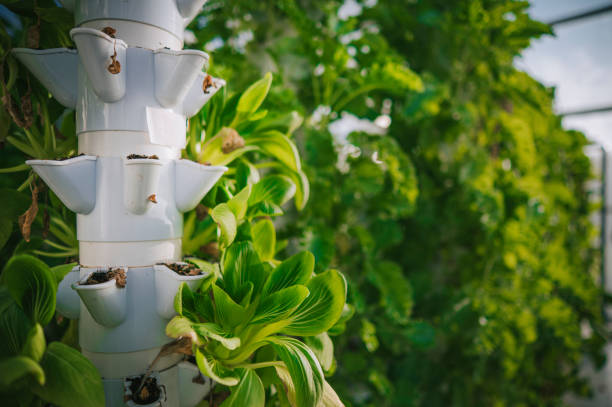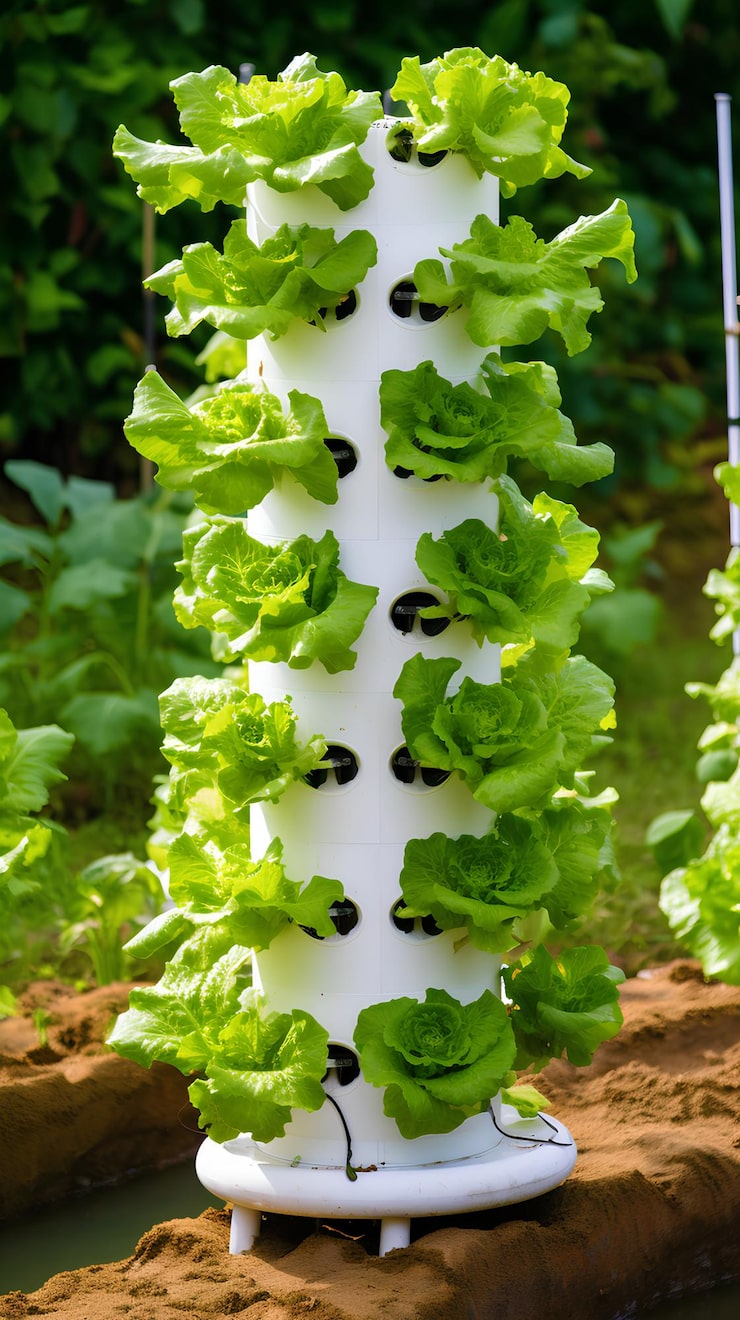Imagine a world where fresh, organic produce is always within arm’s reach, regardless of the season or the size of your living space. This seemingly futuristic vision is a present-day reality thanks to the innovation of the hydroponic tower garden. These remarkable systems represent a paradigm shift in home gardening, offering a clean, efficient, and highly productive way to grow your favorite vegetables, herbs, and even fruits without the mess and limitations of traditional soil-based methods. At its core, a hydroponic tower garden utilizes hydroponics, a method of growing plants in water enriched with nutrient solutions, rather than soil. This ingenious approach redefines how we think about cultivation, emphasizing sustainability and maximizing yield in minimal footprints.
What Makes a Hydroponic Tower Garden So Revolutionary?
Unlike conventional gardening where seeds are planted in soil and watered to keep the roots moist, hydroponic towers completely eliminate soil from the equation. Instead, plants are nestled in net pots, their roots suspended in air within the tower’s structure. A reservoir at the base of the cylindrical tower holds the nutrient-rich water. A pump then circulates this water to the top, allowing it to cascade down over the exposed roots before returning to the reservoir. This continuous, closed-loop system is a testament to incredible water efficiency, a significant advantage over traditional farming, which often loses a substantial amount of water to runoff and evaporation.
The watering schedule in these systems is often automated with timers, allowing for precise control over the nutrient delivery based on the plants’ growth stage. For example, a common guideline suggests running the pump for 15 minutes every hour for 14-18 hours a day, depending on the ambient temperature and the specific germination medium used. This interval-based watering method is actually a form of aeroponics, a sub-category of hydroponics. While many traditional hydroponic systems keep roots submerged constantly, aeroponics exposes roots to more air, significantly enhancing oxygen absorption. This increased oxygen exposure often leads to faster plant growth, making these “hydroponic towers” technically “aeroponic towers” – though the simpler term “hydroponics” is widely used and understood. This automation eliminates the need for manual watering, making the process incredibly convenient and hands-off.
The Space-Saving Power of a Vertical Garden
One of the most compelling benefits of the hydroponic tower garden is its incredible space efficiency, a key characteristic of any vertical garden. Traditionally, farms stretch across vast fields, with each head of lettuce consuming a square foot or more of land. In stark contrast, a single hydroponic tower, occupying less than three square feet, can cultivate 24 or more heads of lettuce, delivering an astounding eight times the yield per square foot. This vertical growth strategy is a game-changer, especially for urban dwellers or anyone with limited outdoor space.
- Ideal for Urban Living: For those residing in apartments, condos, or townhomes without traditional yards, a vertical garden solution like a hydroponic tower provides an excellent opportunity to cultivate fresh produce on a balcony or even indoors.
- Maximizing Small Spaces: Balcony space is precious, and a tower garden allows you to grow a substantial amount of food without sacrificing room for other amenities like a grill or seating.
- Indoor Growing Potential: When equipped with LED grow lights, these towers transform into year-round indoor farms, allowing you to harvest fresh food regardless of external weather conditions.
- Unmatched Yield per Footprint: The ability to stack plants vertically significantly increases the harvestable produce from a minimal ground area, a fundamental advantage of vertical gardening.
Illumination for Indoor Success: Hydroponic Gardens and Grow Lights
Plants, much like humans, depend on light to thrive, as it’s essential for photosynthesis. While outdoor hydroponic towers can bask in natural sunlight, indoor setups require supplemental lighting. This is where modern LED grow lights come into play. Once an expensive and energy-intensive component of indoor gardening, LED technology has revolutionized the industry. Today’s LED lights are affordable, exceptionally energy-efficient, and boast incredibly long lifespans, making year-round indoor gardening highly practical.
Most hydroponic towers offer the option of integrated LED grow lights. If you have an outdoor spot with ample sunlight or an indoor area near a south-facing window, you might not need the lights. However, for true indoor growing, lights are crucial. Automation is key here too; timers can be set to mimic natural day-night cycles, typically providing 12-16 hours of light followed by 8-12 hours of darkness. This consistent schedule is vital for plant health. When selecting grow lights, consider:
- Light Coverage: Ensure the lights provide even coverage across all plant sites on the tower, from top to bottom and side to side.
- Adjustability: The ability to rotate lights 360 degrees or adjust their distance from the plants (closer for seedlings, further for mature plants) allows for fine-tuning based on growth stages.
- Spectrum: While natural sunlight is broad-spectrum, modern white LED grow lights effectively mimic this, emitting a full range of wavelengths necessary for different stages of plant development.
The Anatomy of a Sustainable System: Components of the Tower
While a hydroponic tower garden may appear simple, its construction involves careful consideration of materials to ensure safety and longevity. Crucially, the plastic used in these systems must be “food-safe” to prevent the leaching of harmful chemicals into your produce. Look for towers made from FDA-approved plastics such as #1 (PETE), #2 (HDPE), #4 (LDPE), or #5 (PP). These plastics are also typically BPA-free, addressing concerns about Bisphenol A, a chemical linked to various health issues.
Beyond the food-grade plastic, a well-designed hydroponic tower includes several key features that contribute to its efficiency and ease of use:
- Reservoir: A generously sized reservoir ensures a sufficient supply of nutrient solution and reduces the frequency of refilling.
- Water Pump and Timer: The heart of the automated watering system, ensuring consistent nutrient delivery to the plant roots.
- Net Pots: These support the plants and allow the roots to access the nutrient solution.
- Durable Construction: Thick walls (e.g., 2mm) provide robust support and withstand both indoor and outdoor conditions without fading or discoloration.
- Portability: Features like wheels enhance the tower’s mobility, allowing you to easily move it to optimize sunlight exposure or accommodate changing seasons.

The Future of Farming: Hydroponic Towers and Beyond
The proliferation of the hydroponic tower garden raises an intriguing question: is this the future of farming? For home-based micro-farms, the answer is a resounding yes. These systems offer unparalleled benefits: self-watering and self-lighting capabilities, faster yields, pesticide-free and GMO-free produce, and the ability to grow food in virtually any living space. Within weeks, you can go from seed to harvest, enjoying fresh, organic food cultivated right in your home.
However, scaling hydroponics to industrial levels presents unique challenges. While the land and water savings are immense, the initial capital outlay for equipment, infrastructure, and specialized training can be substantial. Existing large-scale farms would face significant investment in transitioning away from traditional methods. Yet, in arid regions where water scarcity is a constant battle, industrial hydroponic farming has already seen significant adoption, as the water-saving benefits clearly outweigh the costs. As technology advances and understanding of these systems grows, it will be fascinating to witness how hydroponics, particularly the efficiency of the vertical garden, continues to evolve and reshape the agricultural landscape globally.
Conclusion: Embrace the Green Revolution with ALTO Garden
The hydroponic tower garden offers a compelling vision for sustainable living, allowing you to effortlessly grow organic lettuce, vegetables, herbs, and fruits at home. This innovative system requires no soil, ensuring a clean and mess-free experience with just pure clean water and lights. The setup is remarkably simple, and maintenance is minimal thanks to automated watering and lighting. Taking up only three square feet of space, this vertical garden provides a long-lasting, sustainable source of fresh food for your family, redefining what’s possible in home cultivation.
Experience the ease and abundance of home-grown produce with the ALTO Garden GX Tower. This advanced vertical gardening system is designed for optimal plant growth with its built-in LED timer, adjustable broad-spectrum lights, and food-grade materials. From its spacious pot design to its 10-gallon reservoir and durable construction, the ALTO Garden GX Tower makes growing fresh, nutritious food right at home an enjoyable and rewarding endeavor.









